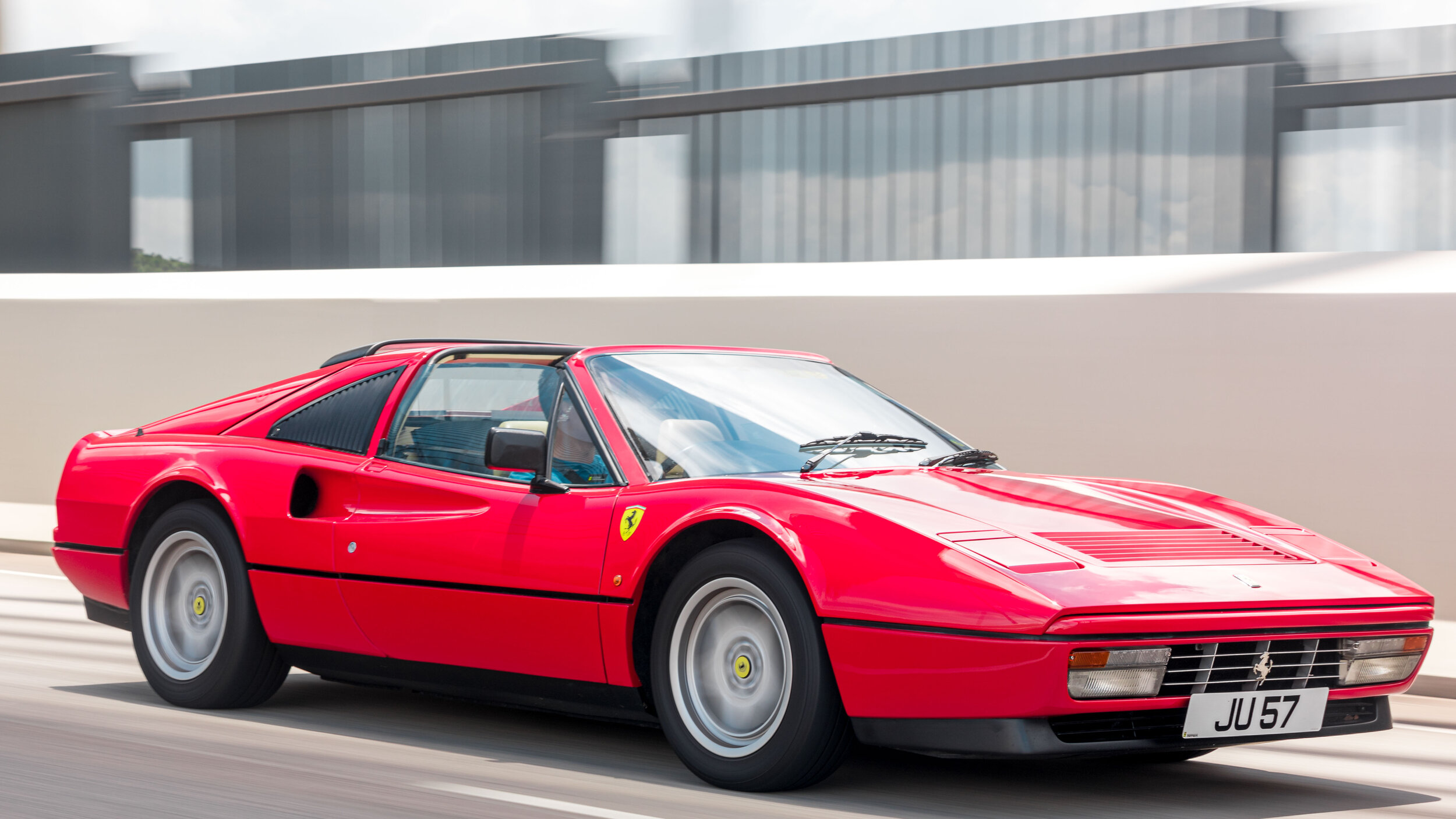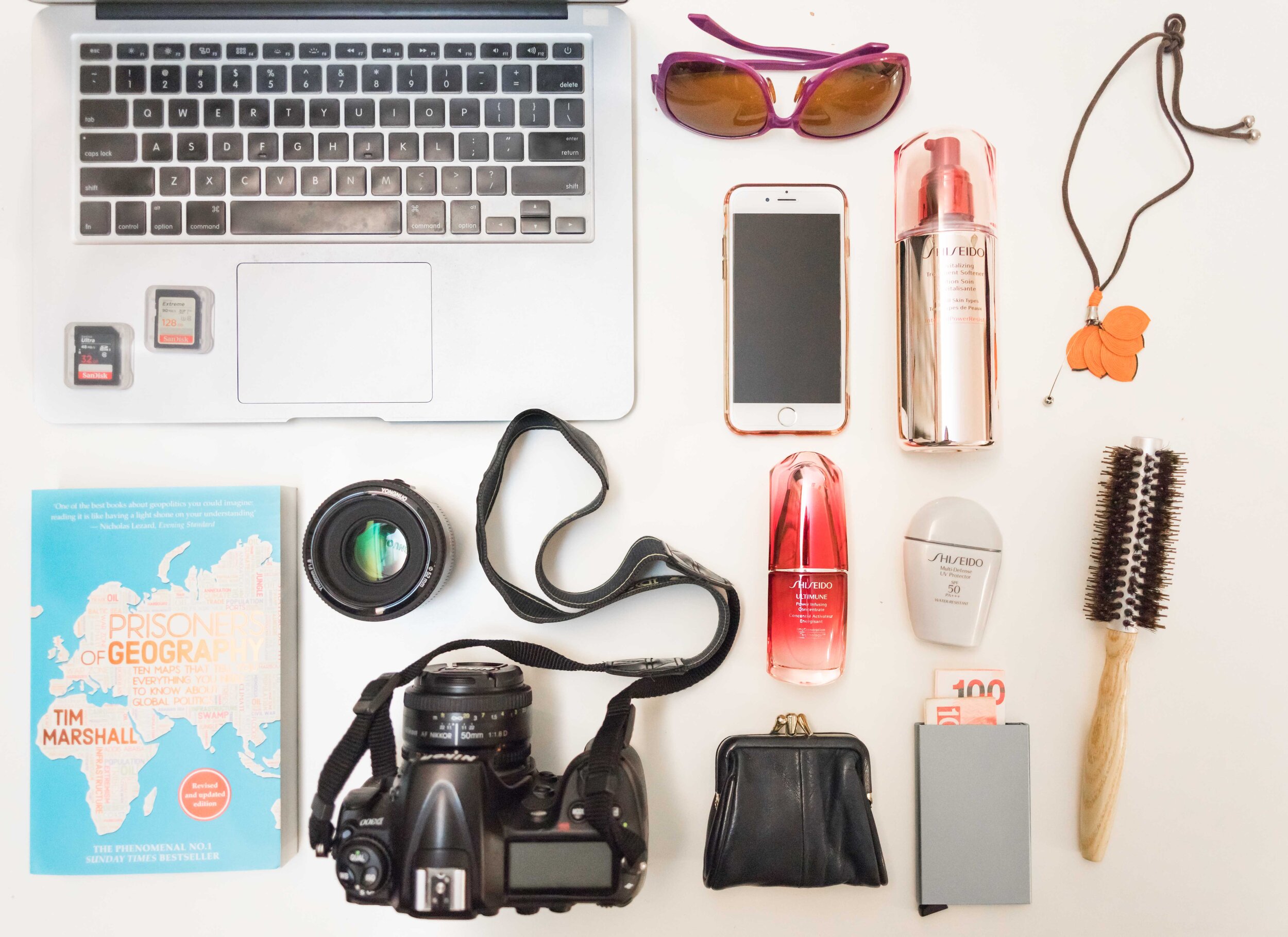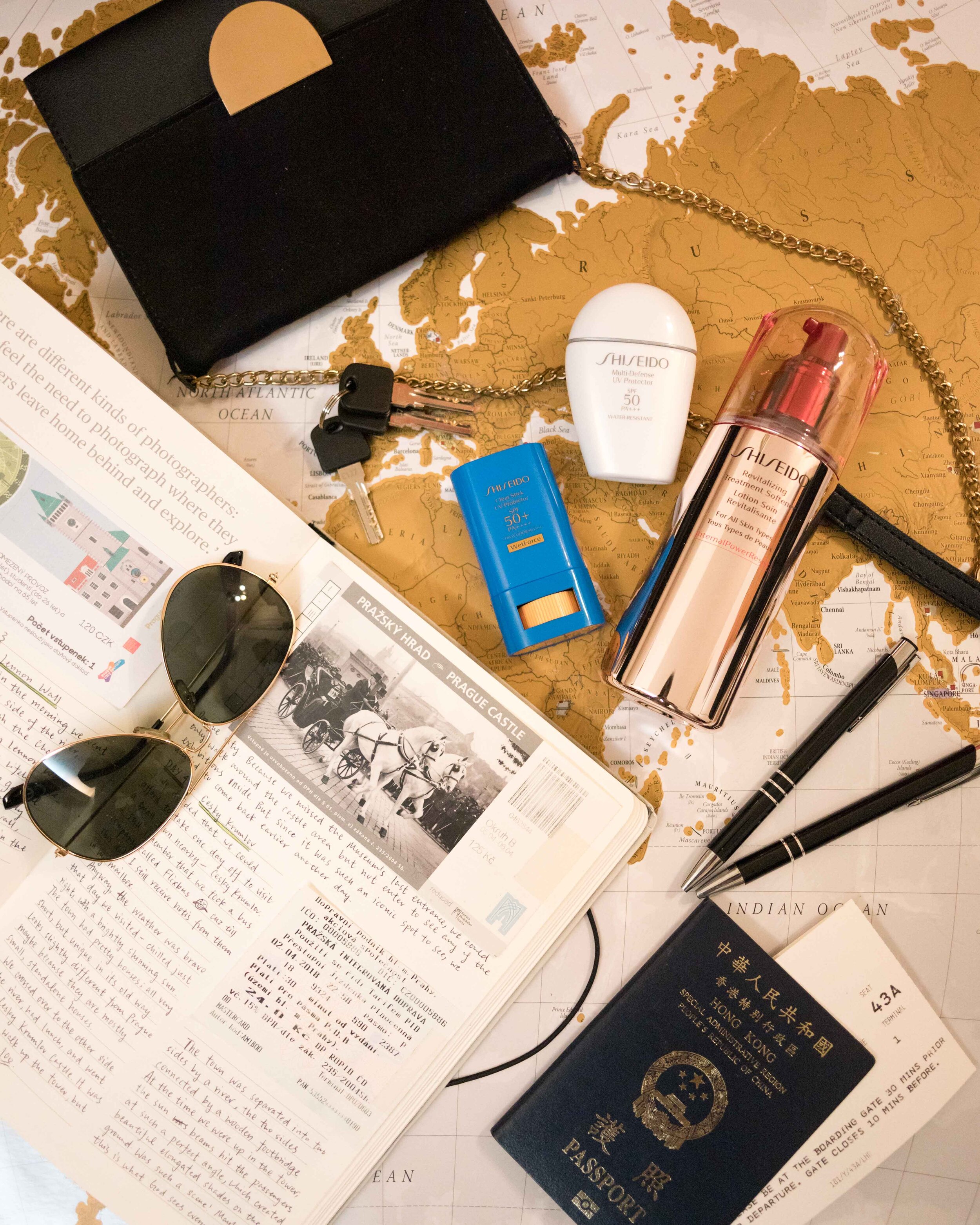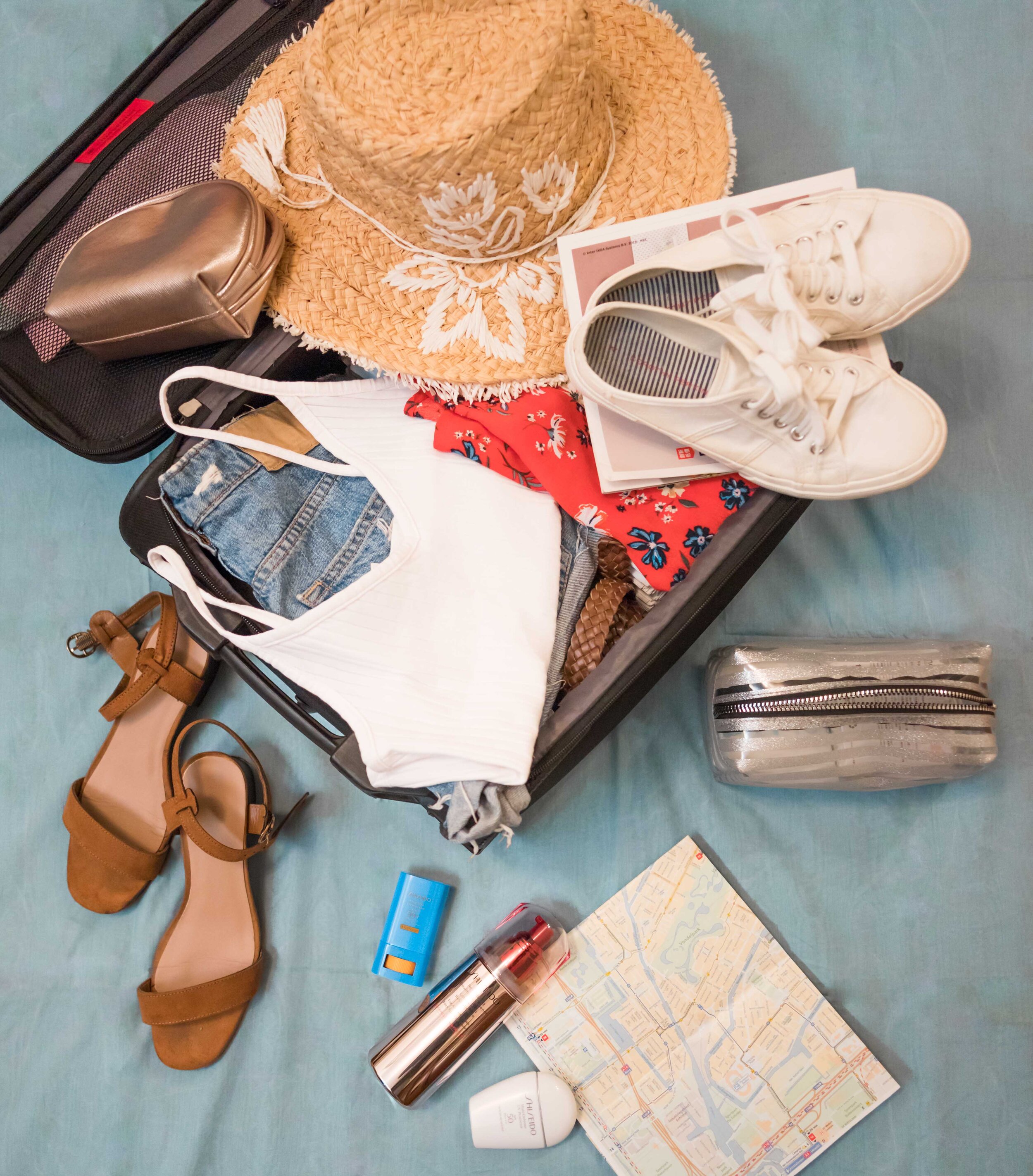Tripods are widely used in both photo and video for different reasons. This article addresses some commonly asked questions in relation to tripods.
In general, you should buy a tripod if you want to start shooting commercially as many photography genres involve using a tripod, such as product and food. This is a worthwhile upgrade as it increases your production quality as a professional. In photography, tripods are typically used for stacking shots, long exposures and difficult shooting angles. In video, tripods are widely used to film yourself and to eliminate camera shake in footages, especially where fast motion is intended. For modern digital cameras, all cameras come with the same mount, thus any tripod would fit any camera.
If you find this helpful, SUBSCRIBE to my channel via the box on the left to make the most out of my blog! Also, do share it with people who might be interested. Shoot me an email/ DM to share your thoughts too.
Also, Pin this article to your Photography Techniques/ Camera & Gear boards in Pinterest if you find it helpful!
Are Tripods Really Necessary?
It would vary depending on two things: 1) the genre(s) of photography that you do, and 2) what your aspirations are in relation to the quality of these shots, in both the professional and recreational sense. Photography genres in which tripods are commonly used include landscapes, product, food and real estate. Another factor to consider is where you want to take your photography. You can still take great photos without a tripod, but having a tripod will enable you to do so under a wider range of situations, and also improve the reliable of your gear for commercial work.
Genres typically requiring a tripod
As we will discuss in greater detail below, in respect to each of these genres, here is a brief overview of the genres that typically require a tripod, along with a brief description of the relevant use cases:
Landscapes - shooting on bulky telephoto lenses and stacking photographs;
Product & Food - shooting from challenging angles like from directly above, or a steep angle with consistency;
Real Estate - making sure shots are shot absolutely straight in camera, and stacking where necessary.
A close relative to the tripod is the monopod, which is typically used for:
Automotive and wildlife - to provide some support to heavy telephoto lenses while panning shots from afar;
Sports - allow flexibility to move the camera freely while freezing the motion.
These shots above were shot on a monopod - it would otherwise be rather impossible to get this level of sharpness as I was shooting on a 70-200mm (as I shall explain below) and the car was racing in full-speed on a highway.
In case you happen to be a photographer who makes videos, this is also a situation in which owning a tripod is necessary.
Photography Aspirations
Technically, having a tripod always results in an increased production quality - definitely a plus if you do a genre of photography that requires the use of a tripod, but so is the case otherwise - owning a tripod equips you better for exploring other photography genres.
The real question is whether it is worth investing in a tripod - it is about weighing the pros and cons of buying/ using a tripod.
If you are shooting in a commercial capacity and the type of photos you create clearly warrants a tripod, the answer is an overwhelming yes. You are paid to produce the highest quality of photos, to provide a return on your clients business in return of them investing in you. So if you foresee yourself heading in this direction, getting a tripod is rather standard.
Where you are not getting paid for your photography (yet; trust me, you will get there if you want to), this is pretty much a matter of personal pursuits. With a tripod, you will be able to do a wider range of things with less effort, and of a better quality. If you have this eagerness to constantly improve your photos, even as an amateur, investing in a high-quality tripod will serve you well.
What Makes a Good Tripod?
This video is a visual demonstration of what to look for in a tripod. In summary, the features that I found to be immensely helpful in a entry-level tripod are the following:
Made of Carbon fibre, enabling high portability
Can hold the heaviest lens-camera combination you own
Extends up to eye-level
Enables shooting in portrait orientation, and
Has a centre column that could flip for overhead orientation.
When to use a tripod?
Following from the section above, let’s dive into the specific situations that require the use of a tripod. They can cut across various genres of photography listed above.
Typical instances in which photographers use a tripod include long exposure shots, in landscape or urban photography as an effect to emphasise on the motion. Tripods are also widely required for stacking photos, both in terms of exposure and focus. When shooting at difficult positions, like from high above or vertically downwards, a tripod provides extra stabilisation and consistency. A more general usage of tripods is when shooting on a heavy lens.
Long Exposures
Long exposure shots are essentially shots where the photographer leverages on motion blur to create an artistic effect. This requires a slow shutter speed to be used, so that some parts of the image stays still while others drift as time past, leaving behind a trail in the photo.
Typical examples of long exposure shots include light rail or light painting shots, crowd shots, and calming water shots. Here is some of my previous work featuring the long exposure technique.
In order for this effect to work, a tripod must be used to keep objects in focus where they need to. For instance, in the case of light rails, the buildings and the infrastructure must be kept still relative to the camera, so that they are not affected by motion blur. Only the cars or trains are designed to move relative to the frame so that the light on them creates a trail.
In situations like these, shutter speed have to go up to a few seconds typically, which is far beyond which the human hand is capable of holding a camera still for.
Since it can take quite a slow shutter to fully record the motion and for the sensor to capture sufficient light to generate a trail, a tripod is necessary to keep the camera still.
Exposure Stacking
Stacking is a photography technique used to overcome technical difficulties encountered in some situations. For instance, where the camera could not sufficiently capture details in both highlights and shadows under highly contrasted lighting because it doesn’t have enough dynamic range.
The solution is to take a few photos with the exact same frame, except that the photography exposes for a different part in each shot. So one shot will be taken to expose for the shadows, in which the highlights totally blow out, and another for the highlights, in which the shadows drop down to absolute nothingness. Depending on the situation, more ‘layers’ might be necessary.
In post production, the raw shots will be placed on top of each other, and the photographer erases the unwanted parts for each respective layer. In the shot with the highlights properly exposed, the shadows will be erased; vice versa for the other shot. The resulting shot then has properly exposed highlights AND shadows as a composite.
In order for this to be possible, the two frames much match each other exactly, or else the parts would not match up. This therefore requires a sturdy tripod.
Focus Stacking
Another type of stacking involves taking identical frames, each with a different focal point. In some situations the photographer might be constrained in the choice of f-stops, or that the space being photographed is simply too wide for most depth of fields. This is when focus stacking comes into play.
Along the similar vein as with the above, the photographer first takes a shot, placing the focal plane in the foreground. He then takes a few more in which he places the focal plane in various points in the space, so that everything in frame (or so he desires) has a focused version among the raw shots.
He then takes all the raws into a post processing software and lines up the layers on top of each other. Taking the focused parts in each layer and piecing them together, he ends up with a composite in which each part is in focus.
Again, since the frames much be taken from the exact same spot for this to work, a tripod is necessary in this case.
Bird-View Shots
This category of shots include either flatlays, or top-down shots done at an angle. A tripod is sometimes required in these situations to provide better consistency across shots by ensuring the position of the camera relative to the platform remains unchanged. At difficult shooting angles, especially the flat lay, tripods can make it physically easier for the photographer, as we will see below.
A typical scenario involving top-down shots is product photography in which the client might have very particular requirements as to the angle from which the photo is taken relative to the product, in order to show case a certain attribute of their product. And it is often the case where the client has a few versions of the same product, all of which have to be shot from the same vantage point. A tripod not only takes off the physical strain of having to shoot from uncomfortable positions, but it is crucial in maintaining consistency across the entire series of shots.
As for flatlays, having a tripod makes it technically easier to conduct the shoot. It is quite a strenuous exercise to have to hold the camera vertically above the subject - especially the camera setup is heavy, it is rather hard for the photographer to balance himself. With the camera set up on a sturdy tripod, the photographer can free up time and mental energy to work on other more artistically defining things, such as the styling of the products, and the lighting etc.
Shooting on Heavy, Long Lenses
Shooting on a heavy, telephoto lens normally requires the use of a tripod to get crisp, in-focus shots. Because the lens is much heavier than other regular lenses, your slowest possible shutter on this lens will be higher than it would otherwise be. If under such circumstances you need to lower your shutter speed for whatever reason, a tripod will come in handy to enable shooting in a shutter speed lower than you can handhold.
Bonus: At what shutter speed would you start to need a tripod?
There are a few factors that could help you determine the shutter speed at which you will start to need a tripod. In general when shooting on normal range lenses, the shutter speed at which you start to need a tripod is roughly 1/80. It can get as low as 1/50 with more practice in handling heavy telephoto lenses. For beginners, you can expect yourself to be able to handhold down till 1/150. If you are shooting on lenses or cameras that has built-in image stabilisation, you might be able to shoot at 2 stops slower than you normally can. Where shooting on a telephoto lens (defined as 70mm onwards here), expect yourself to require a tripod 2 stops faster than you normally would.
That said, there are scenarios in which you will need a tripod despite shooting at a high shutter speed.
If you are shooting on a heavy telephoto lens, you need a tripod to hold your camera if you need to zoom or manual focus. It is impractical to hold the weight of the lens while making lens adjustments. It is only possible if your hands are free to operate the lens. Also, camera menus are designed to be operated by both hands. In order to make changes to camera settings that do not have a shortcut, you will need both hands. With a tripod, you can make adjustments much quicker and not risk missing moments.
Why use tripods for video?
In video, a tripod is an absolute must. You don’t necessarily have to use it for every shot, especially where you want to handheld aesthetic to your film, but you will need one for sure.
Firstly, you will need a tripod when filming yourself, regardless of the gear you are shooting on. Secondly, footage shot on a tripod experience less shake, which enhances the viewer’s experience with the film. Tripods are also very helpful in situations where camera shake is especially noticeable, such as fast motion and zoomed in shots.
To Film yourself - if you have no friends (like me)
Apparently, if you are creating a vlog, or simply talk head videos, and need shots of yourself, you need the camera to be set up at a position away from yourself. The best solution to this is a tripod so that you don’t have to waste time scouting for a suitable platform to put your camera on, which can also be dangerous if you have a heavy camera setup. With a good tripod, your camera will be secure (if you wonder how ‘good’ is ‘good’, refer to my explanation in the video at the beginning). Depending on the model of your tripod, you will experience less constraints, if there are at all, in terms of the angle from which you can shoot yourself.
To shoot Steadicam Shots
In general, stable shots are more comfortable for the eye to see. The eye finds jittery footage exhausting to watch because the viewer has to put in a conscious effort to follow the subject in frame, which would otherwise be moving in a smooth trajectory in real life. Stable shots are closer to what the human eye is used to seeing in daily life, thus making the footage more aesthetically pleasing.
Following from the point above, it minimises distractions and helps the viewer focus on what is at stake in action. When the camera shakes, practically everything in frame moves together with the intended action that was supposed to be the focus. The more effort it takes for the viewer to discern the dominant action in the shot, the easier it is for the viewer to get distracted.
Stability is especially crucial in situations in which the shot was intended to be still, be it a stationery shot or a pan. When seeing such kinds of footage, the viewer is preconditioned to expect a still shot. Unless there is an intentional placement of the handheld aesthetic, camera shakes will be taken to signify amateur production.
Video stabilisation in post-production certainly helps, but it is not advisable to rely on it solely. Garbage in, garbage out - editing cannot create the quality that wasn’t there in the raw shot - it can only take you so far.
Other considerations - hyperlapse/ fast motion
There are other factors in the filmmaking process that could exacerbate the camera shake that was subtle in camera.
With the same footage, speeding it up will make it look more jittery than it actually is because the frequency of the shake has been increased and vice versa (which is why slow motion is often used to dampen the shake in the footage). Any slight camera shake will be amplified and the only way to mitigate that is to not create any camera shake at all from the very beginning.
This is how a tripod is necessary - to hold the camera at a fixed point so that the footage would look decently stable after speeding it up.
Other considerations - crop-sensors/ telephoto lenses
Zooming in also has the effect of making the shakes more apparent. In camera, this means shooting using a crop-sensor camera or zooming in on your lenses, or cropping in editing.
You can think of it this way - the same object is taking up more of the frame when the view is zoomed in, as compared to when it is shot using a lower focal length. Therefore, every bit of shake the subject goes through is enlarged and thus seems more apparent.
Similarly, in this case, using a tripod could minimise that shake when zooming in on a shot, and also allows more room for cropping in editing.
Do tripods fit all cameras?
Yes, at least for digital cameras. It is almost a given that all cameras have the same screw size so that it is seldom a feature that gets photographers excited and talking; it is too the case with tripods so that you don’t need to specify the screw size to the manufacturer when buying a tripod.
If you are not satisfied with convention as the explanation, here are some findings for you.
Camera brands using the standard 1/4-20 screw include Canon, Nikon, Sony, Olympus, Fuji. This is not an exhaustive list, but most consumer cameras have this same thread size.
While some pro or older cameras use the 3/8-16 thread size, if in the unlikely event that you own one of those which could not work with the standard modern tripod, you can easily fetch an adaptor to go with the more common 1/4 thread size.
For your information, 1/4 stands for the diameter of the screw, which is a quarter of an inch, and 20 stands for number of threads per inch.
Summary
In this article, we talked about:
Do you really need a tripod;
Features of a good tripod;
When you should use a tripod;
At what shutter speed would you start to need a tripod;
Why tripods are good for video, and
Whether tripods fit all cameras.
More sharing coming soon!
SUBSCRIBE via the box on the left for more PRO tips, and follow me on Instagram (@_bjiao__) and let me know what you think in the comments!
Share this article on Pinterest too!
Keep shooting, keep creating!
The mission of this blog is to provide the best insider information in the photography industry, as openly as possible. You have direct access to my
first-person experience as an aspiring photographer who talks, but also works.
Honest opinion are rarely available as public resources because this is a competitive industry. Huge sums are made when such information is delivered in the form of mentorship and workshops.
This blog is a great way in which I cover my daily expenses, but also provide real value.
If you have learnt something that would be worth at least $10, please consider donating to the page. This enables me to keep creating content and helping more people sustainably.
Your continued support for the blog is appreciated!







